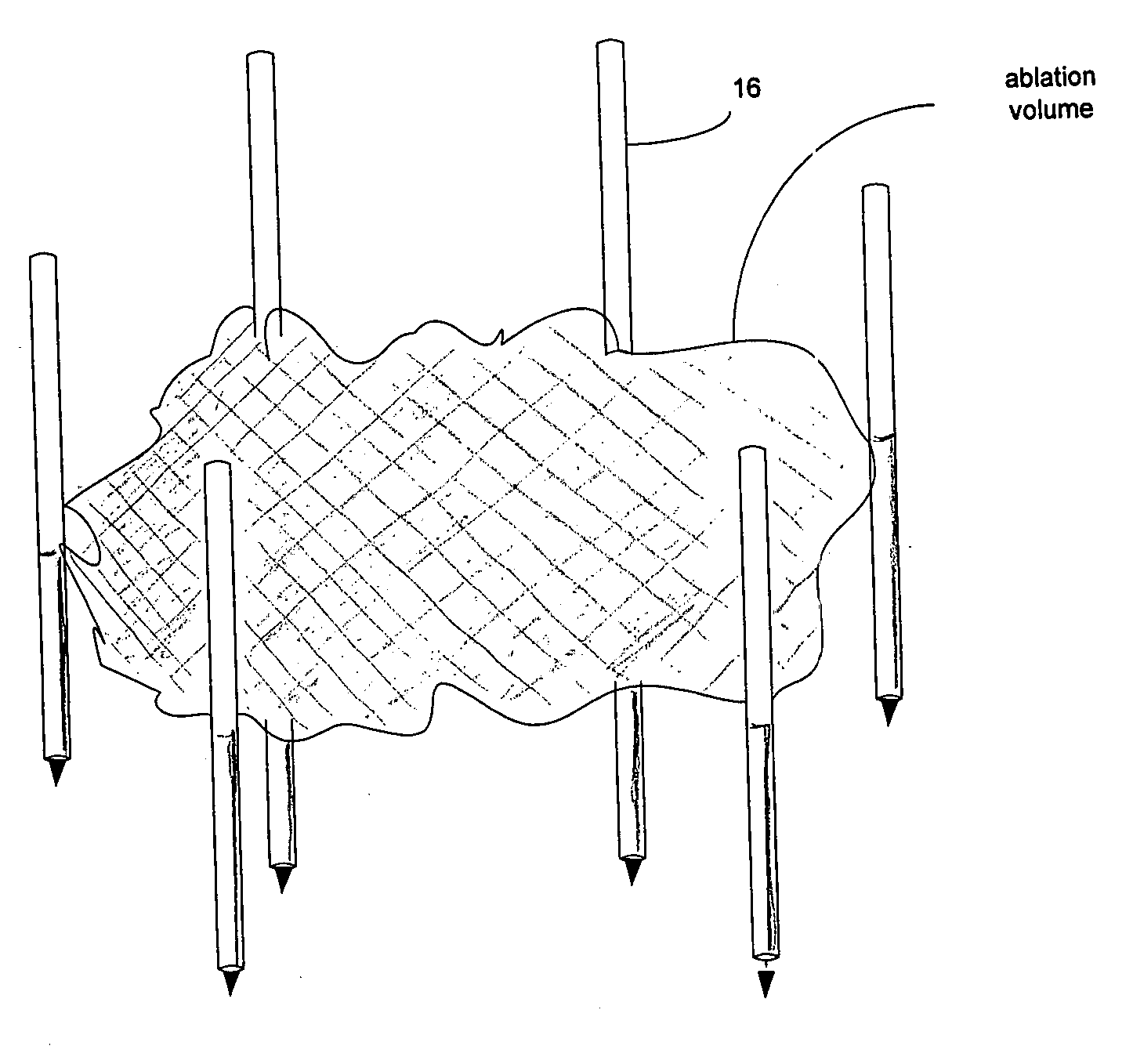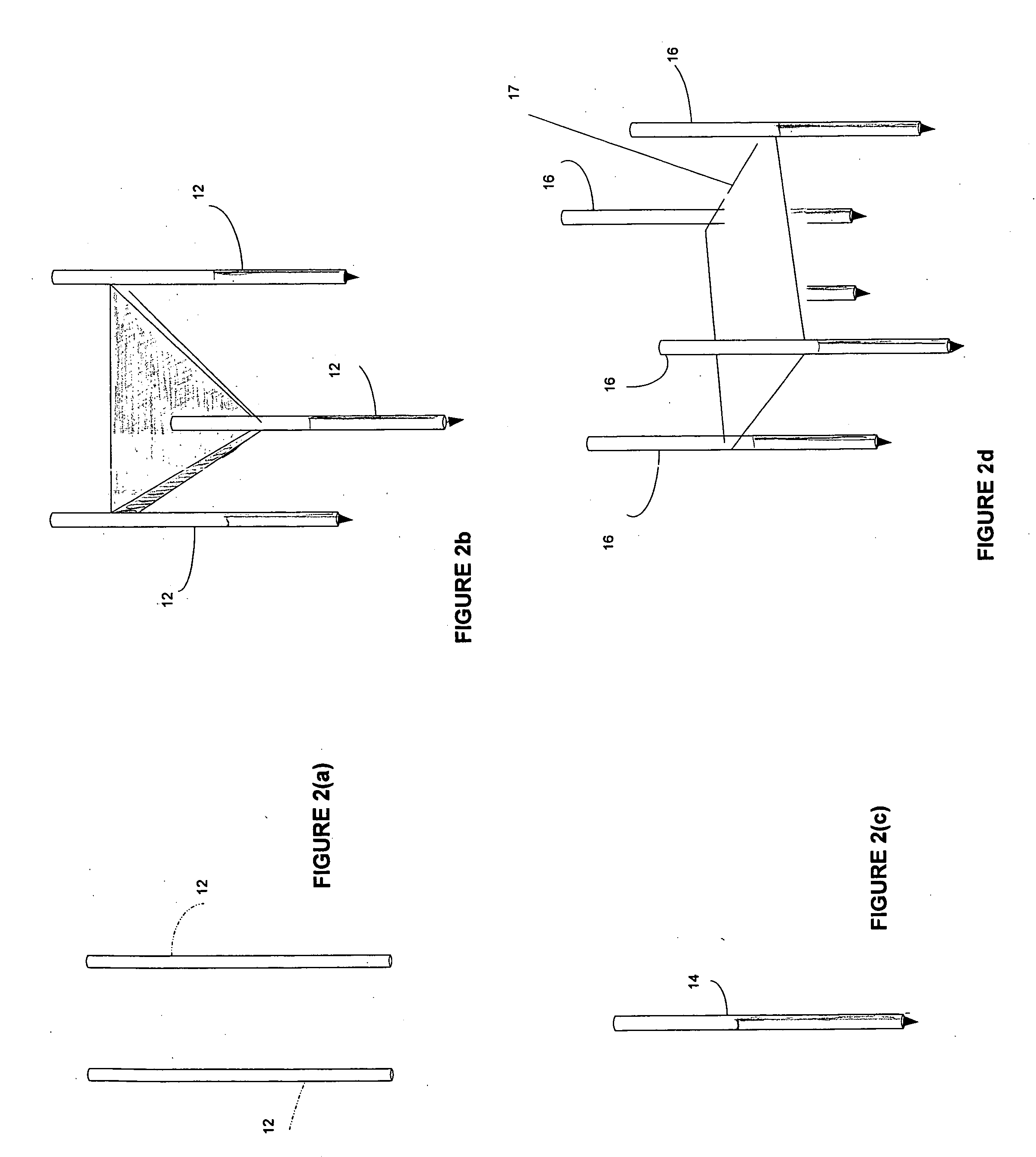Methods and systems for treating fatty tissue sites using electroporation
- Summary
- Abstract
- Description
- Claims
- Application Information
AI Technical Summary
Benefits of technology
Problems solved by technology
Method used
Image
Examples
example 1
[0082] An area of the fatty tissue site is imaged. Two mono-polar electrodes 12 are introduced to the fatty tissue site of the patient. The area of the fatty tissue site to be ablated is positioned between the two mono-polar electrodes 12. Imaging is used to confirm that the mono-polar electrodes are properly placed. The two mono-polar electrodes 12 are separated by a distance of 5 mm to 10 cm at various locations of the fatty tissue site. A tumescent fluid is introduced. Pulses are applied with a duration of 5 microseconds to about 62 seconds each. Monitoring is preformed using ultrasound. The fatty tissue site is monitored. In response to the monitoring, pulses are adjusted to maintain a temperature of no more than 100 degrees C. A voltage gradient at the fatty tissue site in a range of from about 50 volt / cm to about 1000 volt / cm is created. A liposuction probe, coupled to a vacuum source, is provided and removes fatty tissue simultaneously during at least a portion of the electro...
example 2
[0083] An area of the fatty tissue site is imaged. Two mono-polar electrodes 12 are introduced to the fatty tissue site. The area of the fatty tissue site to be ablated is positioned between the two mono-polar electrodes 12. Imaging is used to confirm that the mono-polar electrodes 12 are properly placed. The two mono-polar electrodes are separated by a distance of 5 mm to 10 cm at various locations of the fatty tissue site. A tumescent fluid is introduced. Pulses are applied with a duration of about 90 to 110 microseconds each. Monitoring is performed using a CT scan. The fatty tissue site is monitored. In response to the monitoring, pulses are adjusted to maintain a temperature of no more than 75 degrees C. A voltage gradient at the fatty tissue site in a range of from about 50 volt / cm to about 5000 volt / cm is created. A liposuction probe, coupled to a vacuum source, is provided and removes fatty tissue after the electroporation. A volume of the fatty tissue site undergoes cell ne...
example 3
[0084] An area of the fatty tissue site is imaged. Two mono-polar electrodes 12 are introduced to the fatty tissue site of the patient. The area of the fatty tissue site to be ablated is positioned between the two mono-polar electrodes 12. Imaging is used to confirm that the mono-polar electrodes 12 are properly placed. The two mono-polar electrodes 12 are separated by a distance of 5 mm to 10 cm at various locations of the fatty tissue site. Pulses are applied with a duration of about 100 microseconds each. A monitoring electrode 18 is utilized. Prior to the full electroporation pulse being delivered a test pulse is delivered that is about 10% of the proposed full electroporation pulse. The test pulse does not cause irreversible electroporation. The fatty tissue site is monitored. In response to the monitoring, pulses are adjusted to maintain a temperature of no more than 60 degrees C. A voltage gradient at the fatty tissue site in a range of from about 50 volt / cm to about 8000 vol...
PUM
 Login to View More
Login to View More Abstract
Description
Claims
Application Information
 Login to View More
Login to View More - R&D
- Intellectual Property
- Life Sciences
- Materials
- Tech Scout
- Unparalleled Data Quality
- Higher Quality Content
- 60% Fewer Hallucinations
Browse by: Latest US Patents, China's latest patents, Technical Efficacy Thesaurus, Application Domain, Technology Topic, Popular Technical Reports.
© 2025 PatSnap. All rights reserved.Legal|Privacy policy|Modern Slavery Act Transparency Statement|Sitemap|About US| Contact US: help@patsnap.com



